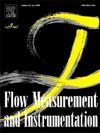Comprehensive characterization of a pneumatic active flow control system using in-situ hot wire calibration
IF 2.3
3区 工程技术
Q2 ENGINEERING, MECHANICAL
引用次数: 0
Abstract
Pneumatic active flow control systems have great potential to control the aerodynamic phenomena including, separation, circulation, and turbulence. To quantify the effectiveness of such flow control schemes, thorough characterization of developed systems is critical in addition to estimating aerodynamic and stability favor. In the present work, experimental characterization of an in-house active blowing system capable of steady and periodic excitations, based on fast switching solenoid valves, is presented via in-situ calibration scheme. Measurements are performed using a constant temperature anemometry system, and characterization is presented for a sample 45o swept delta wing aerodynamic surface. The performance of the developed system is comprehensively investigated for a square wave form excitation with control parameters including an excitation frequency range of 1–32 Hz, duty cycle values of 25 and 50 %, and supply line regulator settings corresponding to supply rate range of 34 m/s ≤ ≤ 60 m/s. The results indicate that the response of the flow control system to control signals is influenced by both the signal parameters and the aerodynamic surface design. Full characterization of such systems using in-situ approaches provides valuable calibration schemes for the mentioned parameters, which is crucial for assessing aerodynamic effectiveness and developing closed-loop flow control systems.
采用原位热线校准的气动主动流量控制系统的综合特性
气动主动流量控制系统在控制分离、循环和湍流等气动现象方面具有很大的潜力。为了量化此类流动控制方案的有效性,除了估计气动和稳定性优势外,对已开发系统进行全面表征也至关重要。在本工作中,通过原位校准方案,介绍了基于快速开关电磁阀的内部主动吹气系统的稳定和周期性激励的实验特性。使用恒温风速测量系统进行测量,并对样品45度后掠三角翼气动表面进行了表征。开发的系统的性能进行了全面的研究,以方波励磁控制参数包括励磁频率范围为1 - 32hz,占空比值为25%和50%,供电线路调节器设置对应于34 m/s的供电速率范围≤U - blow,ref≤60 m/s。结果表明,流量控制系统对控制信号的响应既受控制信号参数的影响,也受气动面设计的影响。利用原位方法对这些系统进行全面表征,为上述参数提供了有价值的校准方案,这对于评估气动有效性和开发闭环流动控制系统至关重要。
本文章由计算机程序翻译,如有差异,请以英文原文为准。
求助全文
约1分钟内获得全文
求助全文
来源期刊

Flow Measurement and Instrumentation
工程技术-工程:机械
CiteScore
4.30
自引率
13.60%
发文量
123
审稿时长
6 months
期刊介绍:
Flow Measurement and Instrumentation is dedicated to disseminating the latest research results on all aspects of flow measurement, in both closed conduits and open channels. The design of flow measurement systems involves a wide variety of multidisciplinary activities including modelling the flow sensor, the fluid flow and the sensor/fluid interactions through the use of computation techniques; the development of advanced transducer systems and their associated signal processing and the laboratory and field assessment of the overall system under ideal and disturbed conditions.
FMI is the essential forum for critical information exchange, and contributions are particularly encouraged in the following areas of interest:
Modelling: the application of mathematical and computational modelling to the interaction of fluid dynamics with flowmeters, including flowmeter behaviour, improved flowmeter design and installation problems. Application of CAD/CAE techniques to flowmeter modelling are eligible.
Design and development: the detailed design of the flowmeter head and/or signal processing aspects of novel flowmeters. Emphasis is given to papers identifying new sensor configurations, multisensor flow measurement systems, non-intrusive flow metering techniques and the application of microelectronic techniques in smart or intelligent systems.
Calibration techniques: including descriptions of new or existing calibration facilities and techniques, calibration data from different flowmeter types, and calibration intercomparison data from different laboratories.
Installation effect data: dealing with the effects of non-ideal flow conditions on flowmeters. Papers combining a theoretical understanding of flowmeter behaviour with experimental work are particularly welcome.
 求助内容:
求助内容: 应助结果提醒方式:
应助结果提醒方式:


